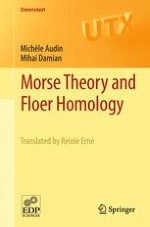2014 | OriginalPaper | Chapter
14. Exercises for the Second Part
Authors : Michèle Audin, Mihai Damian
Published in: Morse Theory and Floer Homology
Publisher: Springer London
Activate our intelligent search to find suitable subject content or patents.
Select sections of text to find matching patents with Artificial Intelligence. powered by
Select sections of text to find additional relevant content using AI-assisted search. powered by
